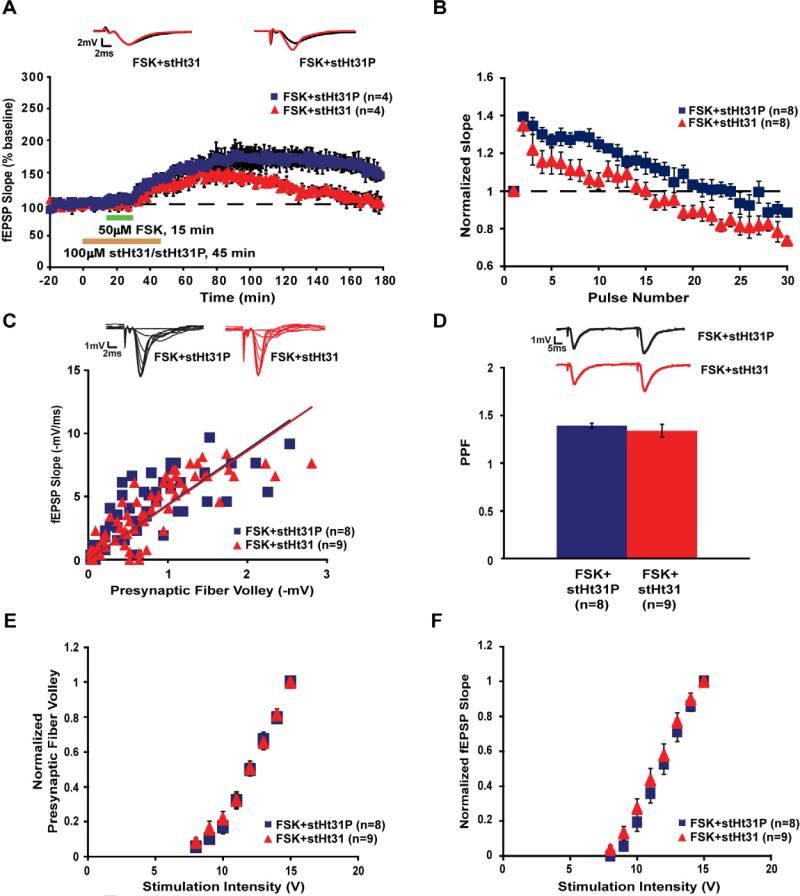Figure 1.
Pharmacological disruption of PKA anchoring impairs forskolin (FSK)-induced long-lasting potentiation and facilitates short-term depression in the hippocampal Schaffer collateral pathway. A. Compared to the control stearated-Ht31P (stHt31P) peptide treatment (100 μM), stearated-Ht31 (stHt31) peptide treatment (100 μM) impairs a form of long-lasting potentiation induced by 15 minutes of bath application of 50 μM FSK (two-way repeated-measures ANOVA, F(1,6) = 15.045, p = 0.008). Representative traces acquired at the baseline (black) and at the last 20 minutes of the recordings (red) are shown on top of the graph. B. In FSK-treated slices, application of stHt31 peptide facilitated short-term depression induced by 10 Hz stimulation relative to application of stHt31P peptide (two-way repeated-measures ANOVA, F(1,14) = 8.377, p = 0.012). Values were normalized to the initial response. C. Slices co-treated with FSK and stHt31 peptide showed input-output relationships similar to slices co-treated with FSK and stHt31P peptide (t-test, p = 0.902). D. Paired-pulse facilitation (PPF) at 50 ms interval was not significantly different between FSK-treated slices perfused with stHt31 or stHt31P peptide (t-test, p = 0.46). E and F. Slices treated with stHt31 or stHt31P peptide along with FSK showed comparable changes in the presynaptic fiber volley (PFV) amplitude and initial fEPSP slope with increasing stimulation intensities (two-way repeated-measures ANOVA, for PFV amplitude: F(1,15) = 1.575, p = 0.606; for initial fEPSP slope: F(1,15) = 1.118, p = 0.295). Values were normalized to the maximum response. Error bars reflect S.E.M.

